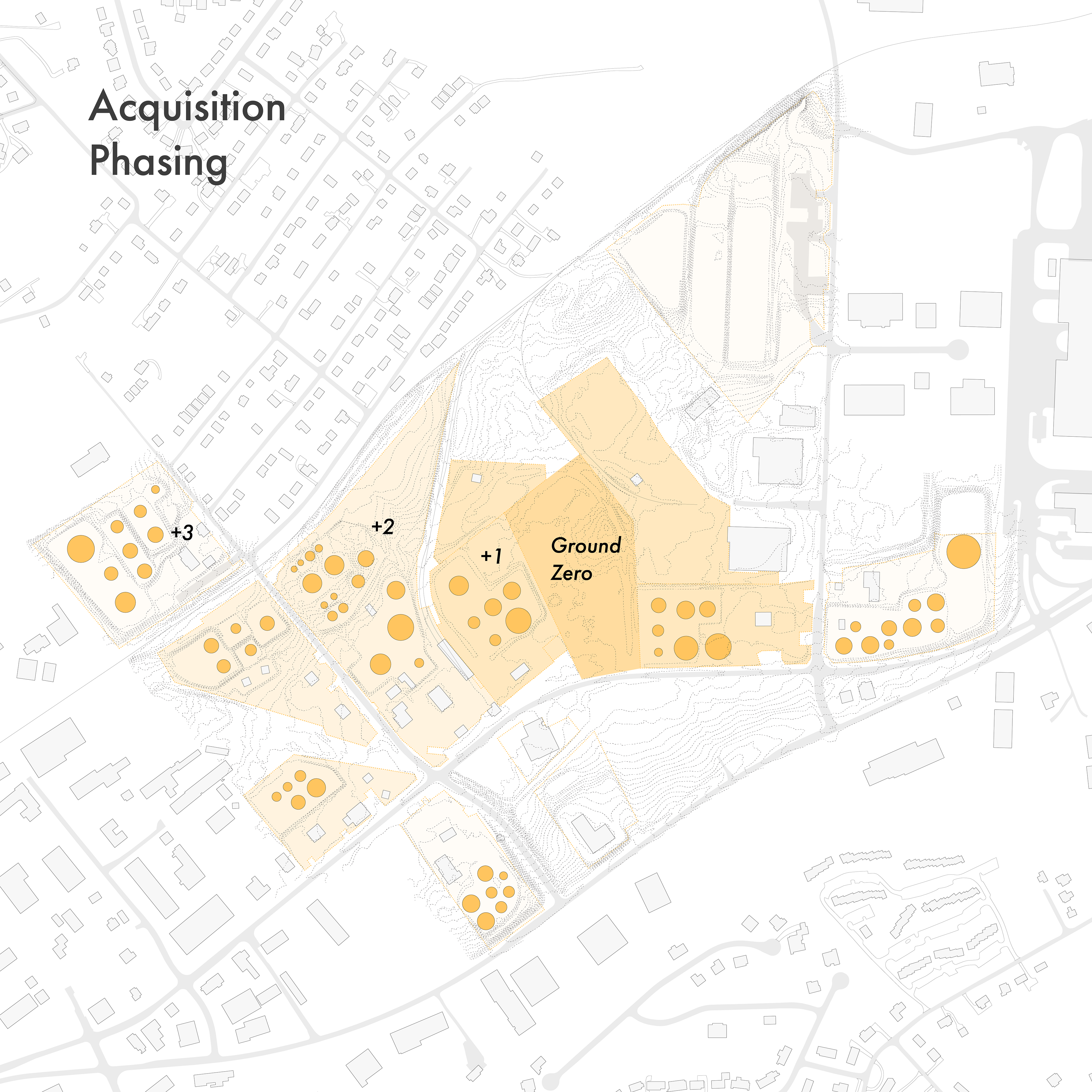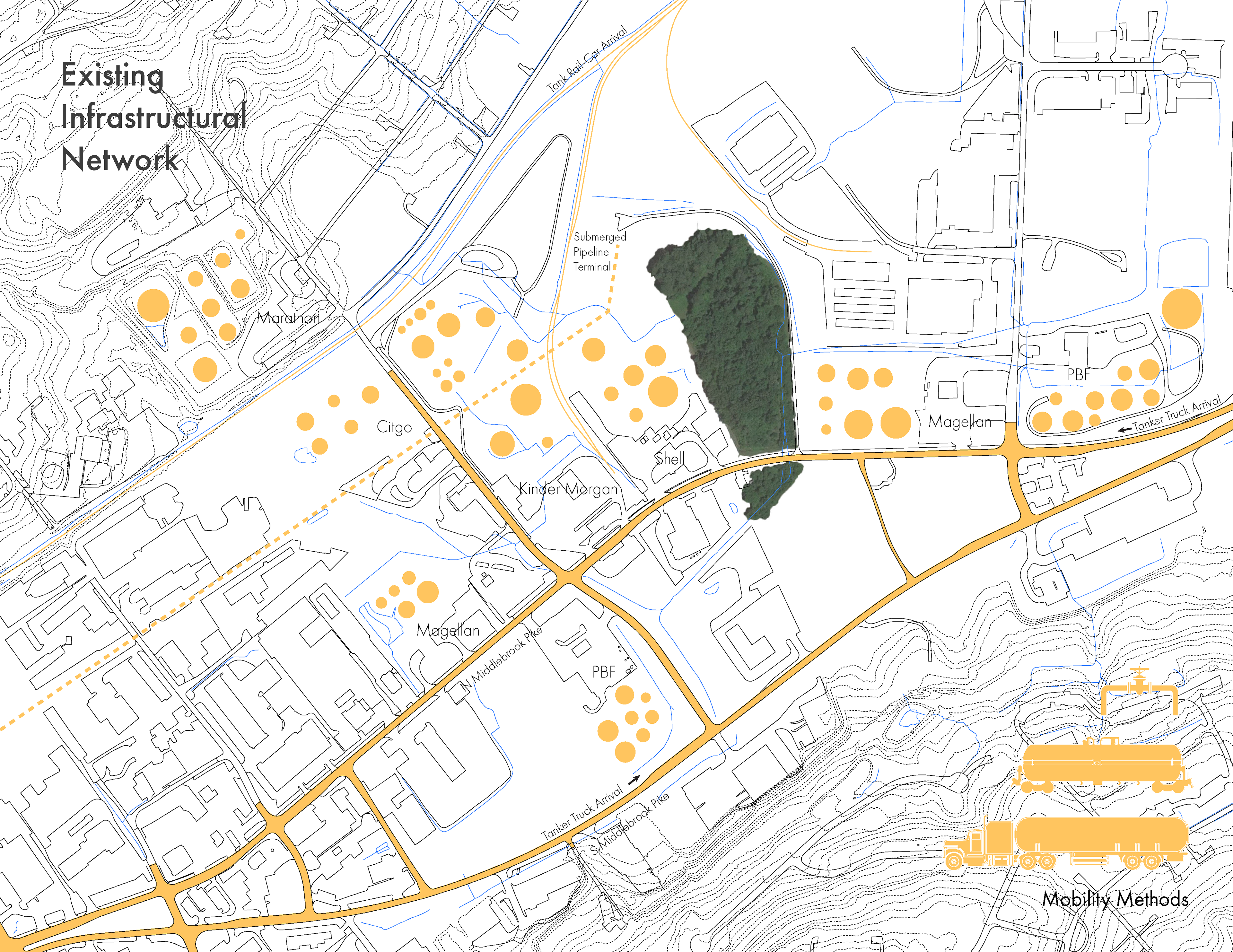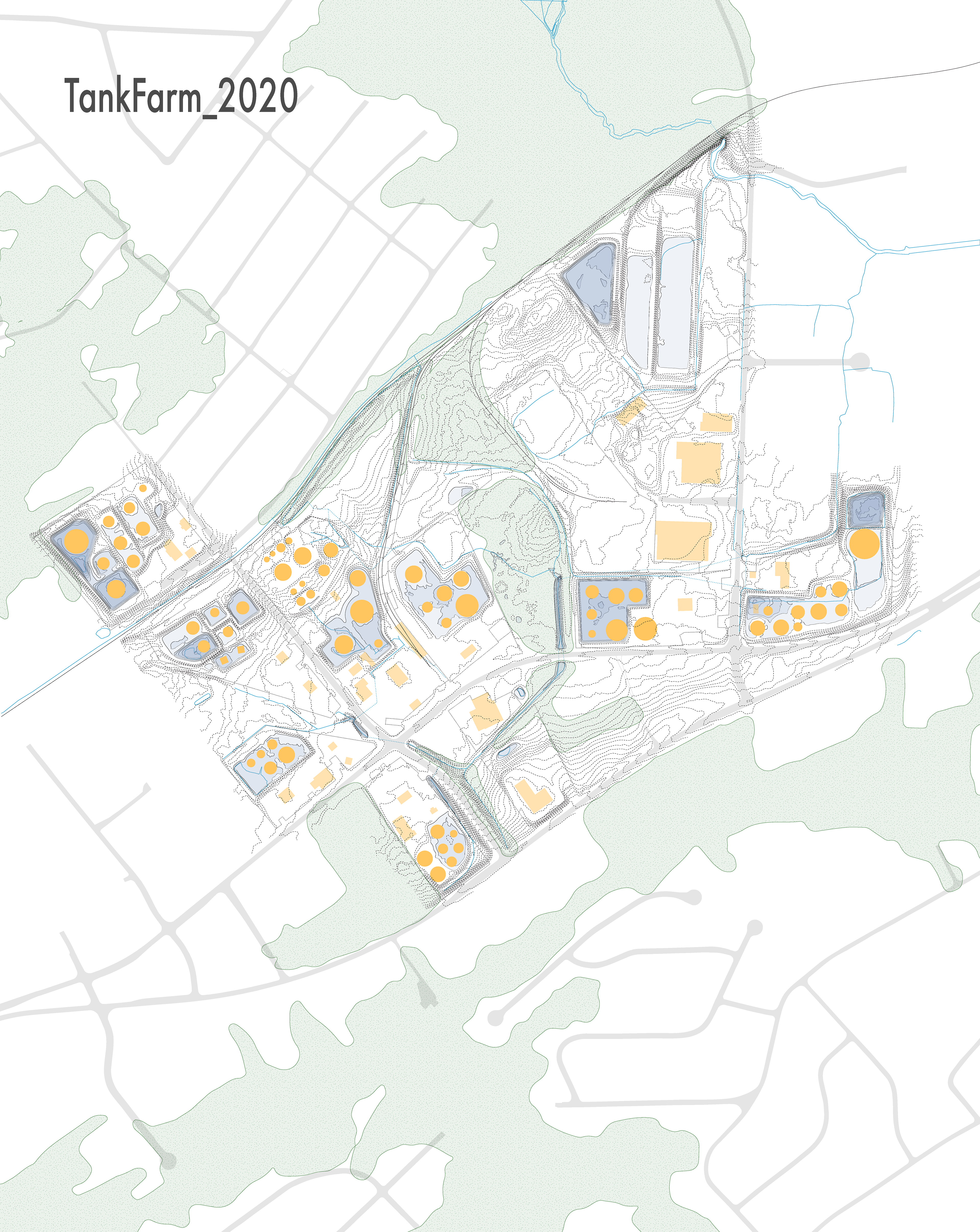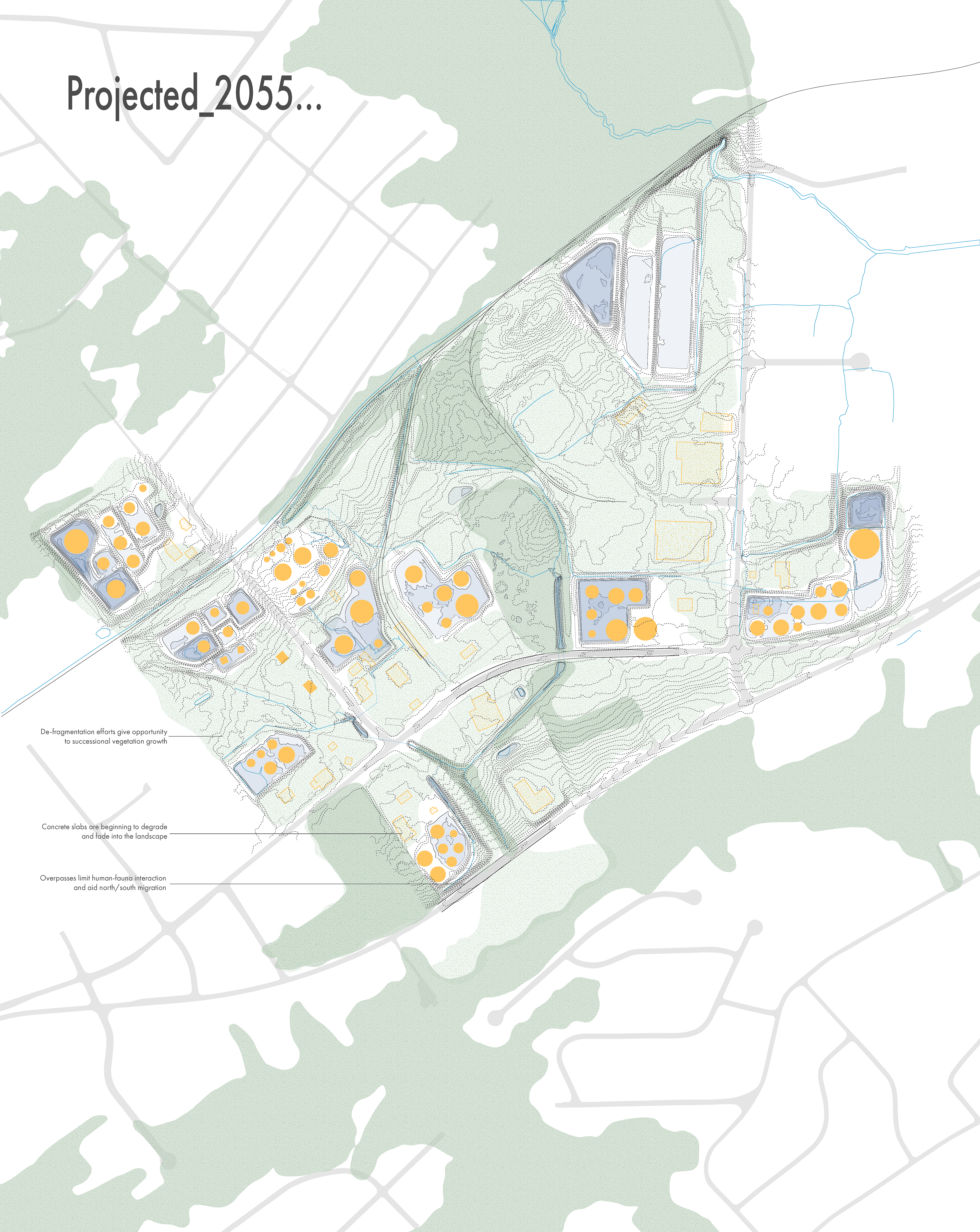In a future where petrochemicals have been either exhausted or eradicated, remnant industry infrastructures and disfigured landscapes plead for rehabilitation. The inherent violence of extraction and transportation of petrochemicals left a network of scars across the Southeast United States. These sites were once productive nodes in a critical network of oil-based consumerism, however, in time, they will become irrelevant as society’s trajectory shifts to value sustainable energy alternatives. But is it possible for these sites to evolve into a new beacon of productivity? Through a series of acquisitions, I am proposing a remediation effort that will make amends for the site’s past.







By retrofitting the existing infrastructure of the terminal tanks, I will introduce programmatic elements that challenge the site to immerse spectators in a landscape that has had restricted access for decades. These altered tanks will be the new source of productivity on site and reconnect the land with its ecological context. This will give way to a new network of productivity that will occupy the abandoned regional network left behind by the petrochemical industry.
The site shows potential in the unique microtopographic conditions located in the berms that surround the oil terminals. They will be used to create varying stages of aquatic habitat and retention ponds. Planting palettes are derived from regional plant communities in order to reconnect the site with it’s context. The concept of water treatment on a historic volatile site challenges the landscape to repair the wrongs imposed on it during its tenure as a uber-productive, petrochemical node.
